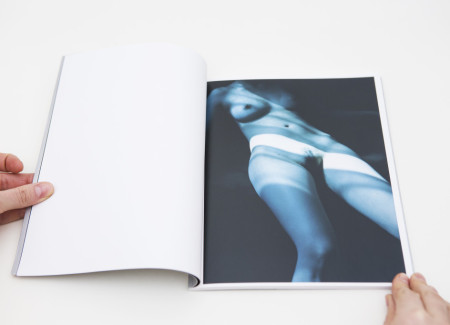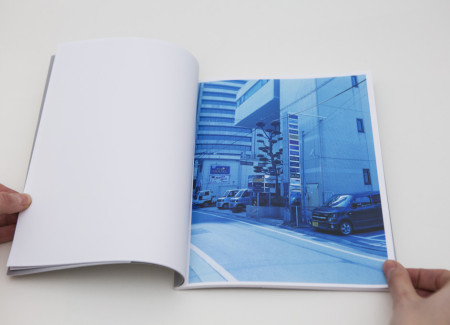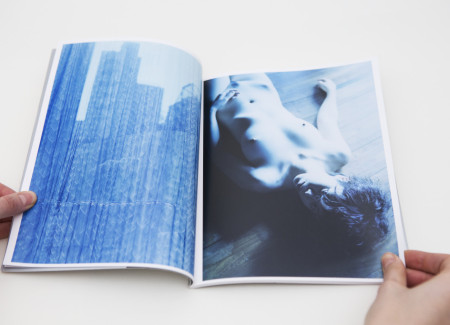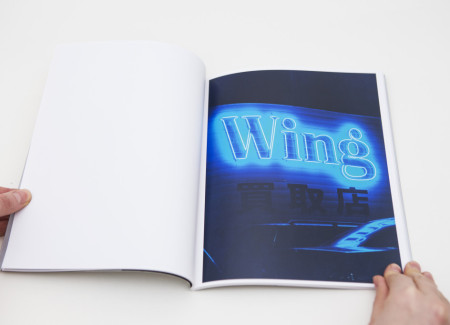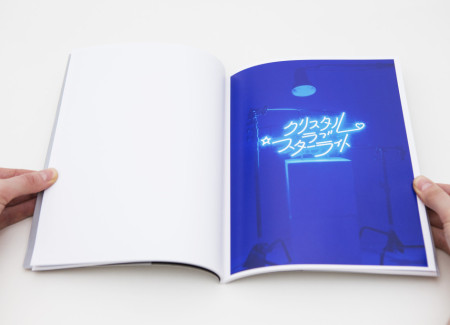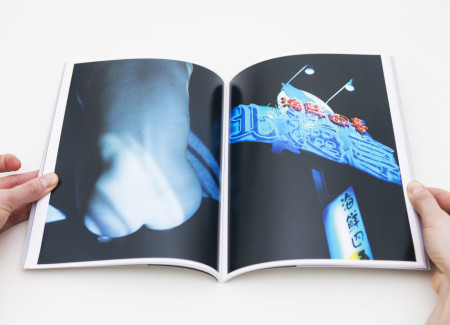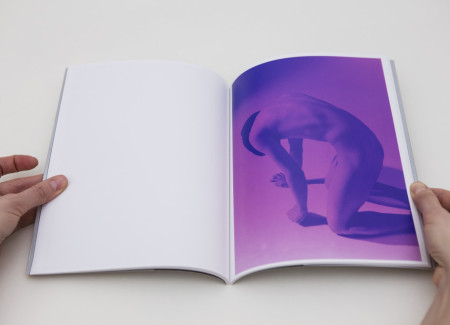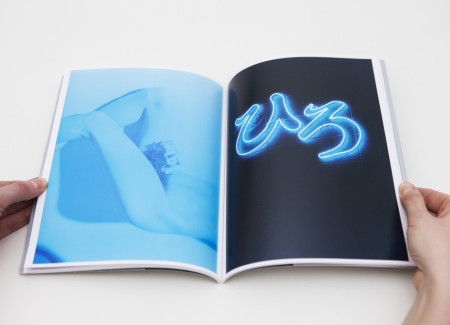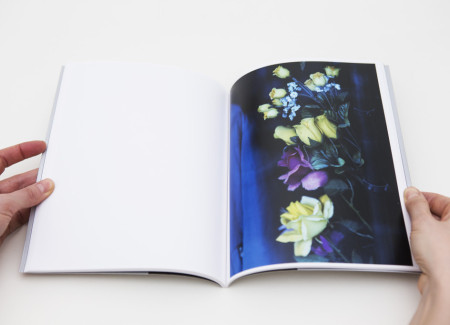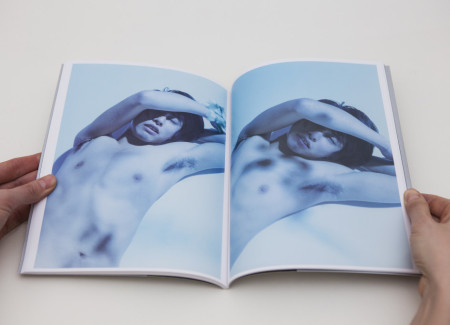JTF (just the facts): Published in 2014 by Tycoon Books (here). Softcover, 64 pages, with 39 color photographs. First edition of 500 copies. Includes short image titles and the text of a newspaper article (in English and Japanese). (Spread shots below.)
Comments/Context: Crystal Love Starlight is a new publication by a young Japanese photographer named Mayumi Hosokura, and her work is representative of the style a younger Japanese generation, where nudes and nature often invite viewers to use their imagination. This particular series was inspired by a real criminal case, the details of which Hosokura discovered while searching the archives of a local newspaper. As we learn from the short article (reprinted in the back of the book), a small restaurant located in a rural area of Maebashi city (just over 100 km from Tokyo) came to light in 1992 “on suspicion of running a brothel”, and the restaurant manager and a waiter were subsequently arrested. It was estimated that this shady business might have netted the men as much as 50 million yen since its opening in 1990 (equivalent to roughly $400,000 today). The restaurant was called “Crystal Love Starlight”, its rather meaningless trashy title an example of the incomprehensible English naming so often used by Japanese snack bars and love hotels to lure in customers.
The book opens with a Japanese newspaper clipping of the article, and Hosokura then builds up her narrative by mixing images of the area around the restaurant with nude portraits and glowing neon signs. As we flip through the book, we see the suburban lights, fragments of dull industrial buildings, parked vans, and empty clean streets, with few traces of people. Is this the anonymous area where the restaurant used to operate? Numerous neon signs (photographed around Gunma prefecture and along Route 17 which connects Maebashi city and Tokyo) glimmer in the darkness, the flashy neon lettering referencing a flourishing culture of consumerism and advertising. In Hosokura’s visuals, the buzzing colors also serve as connecting point between the criminal case of illegal prostitution and the quiet nude studio portraits shot in Tokyo.
Hosokura’s nudes are steeped in the act of selling sex and her interest in a sexual gaze. They seem to press us with questions – what are the ways of looking at male and female bodies? and how are those gazes different? One of the first images is a nude female body shot against a dark background, her legs slightly open while rays of sunlight illuminate parts of her body. More nude bodies follow (of both genders), twisted into evocative curled poses and shot against plain backdrops; in many of these photographs, Hosokura slightly obscures the gender of her models, just enough to disorient us for a moment. These photographs are delicately muted and vulnerable, the models resting in an almost meditative stillness. Flowers are incorporated in some of the compositions, often placed on the private parts of the models, adding a splash of unexpected natural symbolism.
Hosokura’s use of neon inspired tints (generally blue and pink) adds a distinctive eye catching cast to her hazy ethereal studio pictures, and it’s clear that she’s has been playing with the physicality of the printmaking process. Starting with images that were shot on monochrome film, many of the negatives have been printed using only a single color, echoing the shimmer of the neon illumination. For Hosokura it seems important to connect the experience of developing the images with a feeling “of a night walk on a neon-lit road”.
The book design itself is rather unassuming. The cover is gray on gray, with a sparkle of silver, and the short image captions in the back are listed in modest typography and sparse wording (“looking down Route 17” refers to one of the first images in the book showing the city at night, while “cat (blue)” describes one of the portraits). The layout of the book is simple, consistent, and understated, typically with one photo on a full page, each with a small white border. The straightforward design choices stand in subtle contrast to the book’s bolder content of glittery neon signs and aggressive consumerism.
What’s intriguing here is that Hosokura thoughtfully mixes the recreated factual elements of a story based on an old criminal case and her own expressive visual reactions to that narrative, leaving it to the viewer to distinguish between the two. Her mash up of gentle nude portraits and brightly illuminated night scenes adds an erotic sensitivity to the visual flow, seducing us with mysteries and desires that are left gracefully open ended.
Collector’s POV: Mayumi Hosokura is represented by G/P Gallery in Tokyo (here). Her work has little secondary market history at this point, so gallery retail remains the best option for those collectors interested in following up.


